This story begins with a little boy receiving a pawn shop Gibson archtop from his uncle. That’s when a love affair began that is still strong today.
This story begins with a little boy receiving a pawn shop Gibson archtop from his uncle. That’s when a love affair began that is still strong today.
That little boy was Dr. Jonathan Kellerman, a world-renowned psychologist and one of America’s most prolific and popular novelists, with more than 45 million books in print internationally. His best-selling crime novels have entertained readers worldwide.
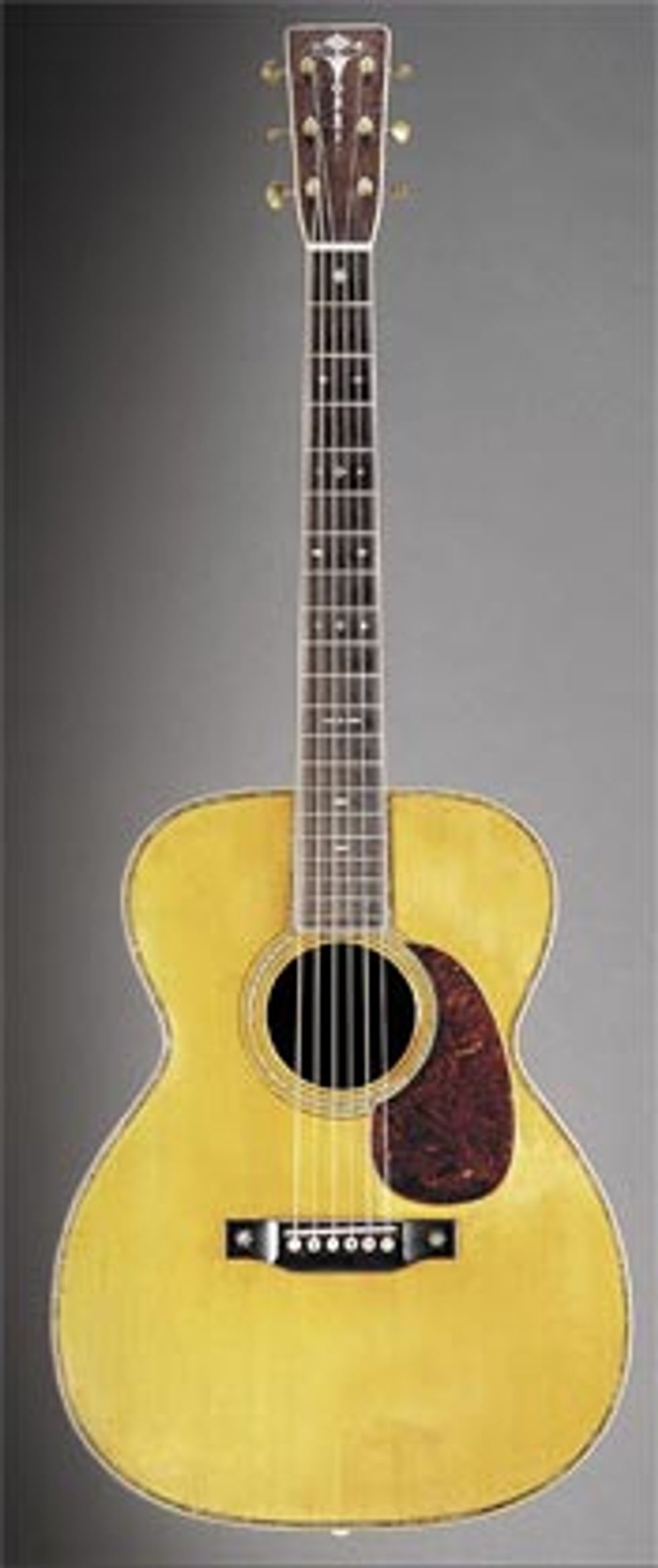 | 1932 Martin OM-45 “Martin’s famed Orchestra Model (OM) was built at the request of musician Perry Bechtel in the late 1920s. He wanted a guitar that featured a narrower fingerboard with frets that were accessible past the 12th fret. Martin took a Grand Auditorium (000-sized) and squared the shoulders to allow access up to the 14th fret. Subsequently, this led to a longer 25.4” scale length. The OM first appeared in Martin’s catalog in 1930 and was immediately available in several trim levels, including the top-of-the-line Style 45. Features of this style include Brazilian rosewood back and sides; pearl borders around the top, sides, soundhole, and fingerboard; ivoroid binding; and fancy snowflake fingerboard inlays. Only 40 OM-45s were produced between 1930 and 1932, and these guitars currently bring $150,000+ in the vintage guitar market.” –Zachary Fjestad author of the Blue Book Series |
Kellerman’s latest book, With Strings Attached: The Art and Beauty of Vintage Guitars (Random House), is a departure from what his readers normally expect, but the plot is quite familiar to gearheads—you can never have too many guitars. The 387-page book features fretted instruments that Dr. Kellerman and his wife have acquired over the last 40 years. It contains 120 pictorial essays and an introduction by Andy Summers of the Police.
In an exclusive interview, we chatted with Dr. Kellerman about the love affair and found that it draws on his immense respect for luthiers. The Kellerman collection has been painstakingly assembled over decades and ranges from a prewar Martin flattop to Gibson electrics to vintage classical guitars, some of which are hundreds of years old.
Despite having one of the most unique and valuable private collections in the world, it is Kellerman’s collecting criteria that really impressed us. Some enthusiasts collect for ego; some collect in anticipation of financial return; and some collect for status; but Dr. Kellerman is motivated by a player’s passion. He values sound, tone, and playability above all else.
“I won’t insult your intelligence by claiming I never intended to build a collection, because you don’t just happen to end up with 120 guitars. But amassing and hoarding were never my primary motivations. For the past thirty-five years, I’ve been chasing fabulous sound. And since the guitar produces a more varied sound than any other instrument, the quest has led me to lots of guitars,” Kellerman explains.
In this spectacular coffee table book, we are treated to pictures and stories of one gorgeous piece of guitar porn after another. The usual suspects—Gibson, Fender and Martin—are there, as well as aficionado brands like D’Angelico, Hauser, Stromberg and Torres. The pictures of these rare beauties are accompanied by Jon’s own back stories and written as only a wordsmith with a keen attention to detail can write them.
| 1936 Martin 000-28S “The Martin 000-sized guitar debuted in 1902, but it never gained popularity until the late 1920s. In 1934, Martin introduced the configuration that is seen here with a squareshouldered 14-fret body and a solid headstock. However, this is a specially ordered guitar (indicated by the S in the model name) in rare 12-string configuration. Not only is this the only 12-string 000-28 in existence, it is the only pre-war steel 12-string Martin guitar ever built! Style 28 guitars feature Brazilian rosewood back and sides and herringbone top borders. Regular 000-28 models from 1936 command $35,000 to $40,000 in the vintage guitar market; however, a model this rare precludes accurate pricing. Many famous musicians including Eric Clapton, Norman Blake, and Lonnie Donegan have continued to make this one of Martin’s most popular configurations.” –Zachary Fjestad | 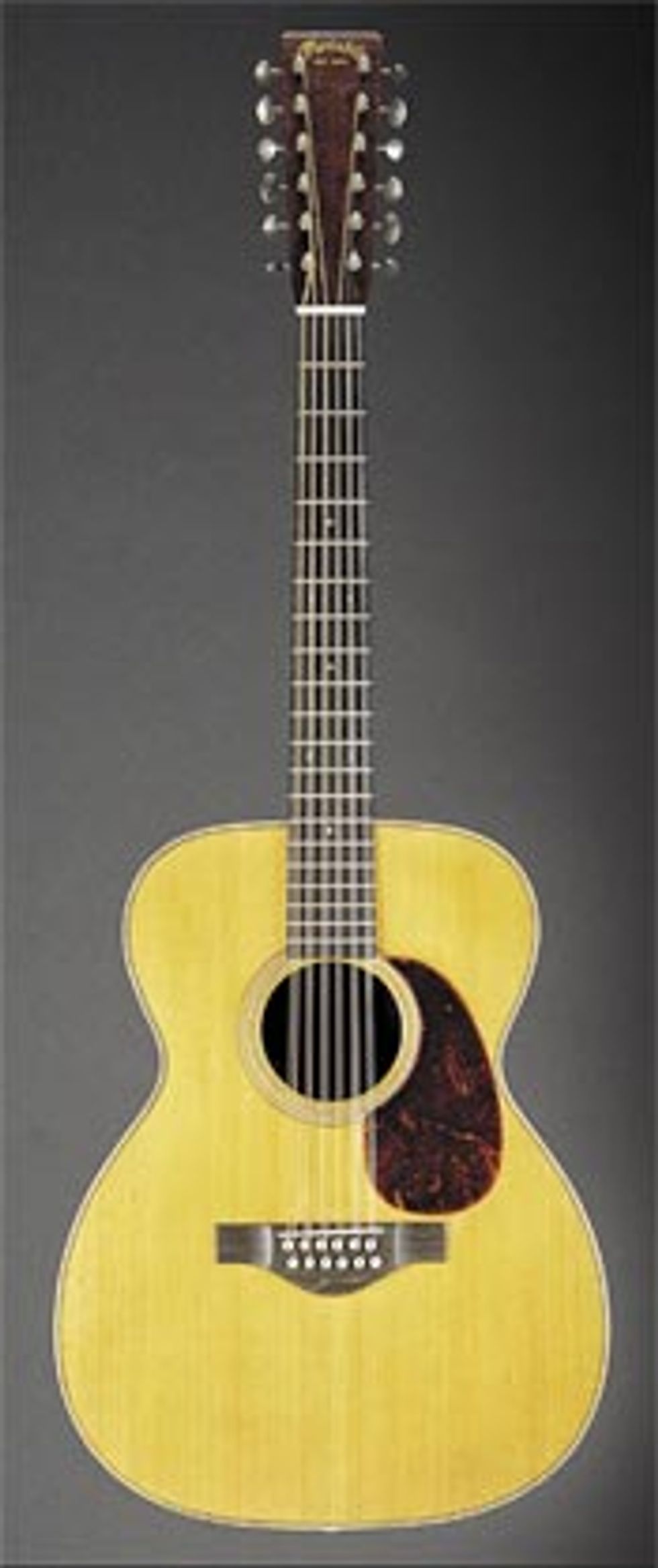 |
Dr. Kellerman freely confesses to being a lifelong “guitar freak“ and is decidedly gear agnostic as reflected in his opinion that, “it really doesn’t matter what the genre is, you know, it’s all about sound and tone.” The author’s favorite musicians reflect his diverse respect for guitarists from many genres. “There is so damn much talent out there,” he says, “and I respect and admire everyone from Segovia to Eric Johnson!”
“Respect” is a word that punctuates the author’s enthusiastic comments for the instruments themselves, for the often eccentric craftsmen who gave them life, and for the artists whose music brought them to life. Jonathan is quick to point out that his collection is evolutionary and reflects his shifting tastes that have taken him from electric to acoustic to steel and, currently, to classical, which he describes as a playing challenge that is both inspiring and humbling. Dr. Kellerman’s collection is as noteworthy for his rare pieces as it is for its variety, but as passion goes, first loves are always something special. As you might have guessed, the central piece in his collection is still the pawn shop Gibson.
In these pages we bring you a look at six of the guitars in Jon’s collection:
- 1932 Martin OM-45 (opposite page)
- 1936 Martin 000-28S (this page)
- 1959 Gibson ES-335TN
- 1962 Gibson Les Paul Custom
- 1934 D’Angelico Excel
- 1965 Fender Jazz Bass
With Strings Attached: The Art and Beauty of Vintage Guitars is now available in a discounted pre-order at amazon.com, and is available in stores and on bn.com and indiebound.com on October 28. For more about Jonathan, visit jonathankellerman.com
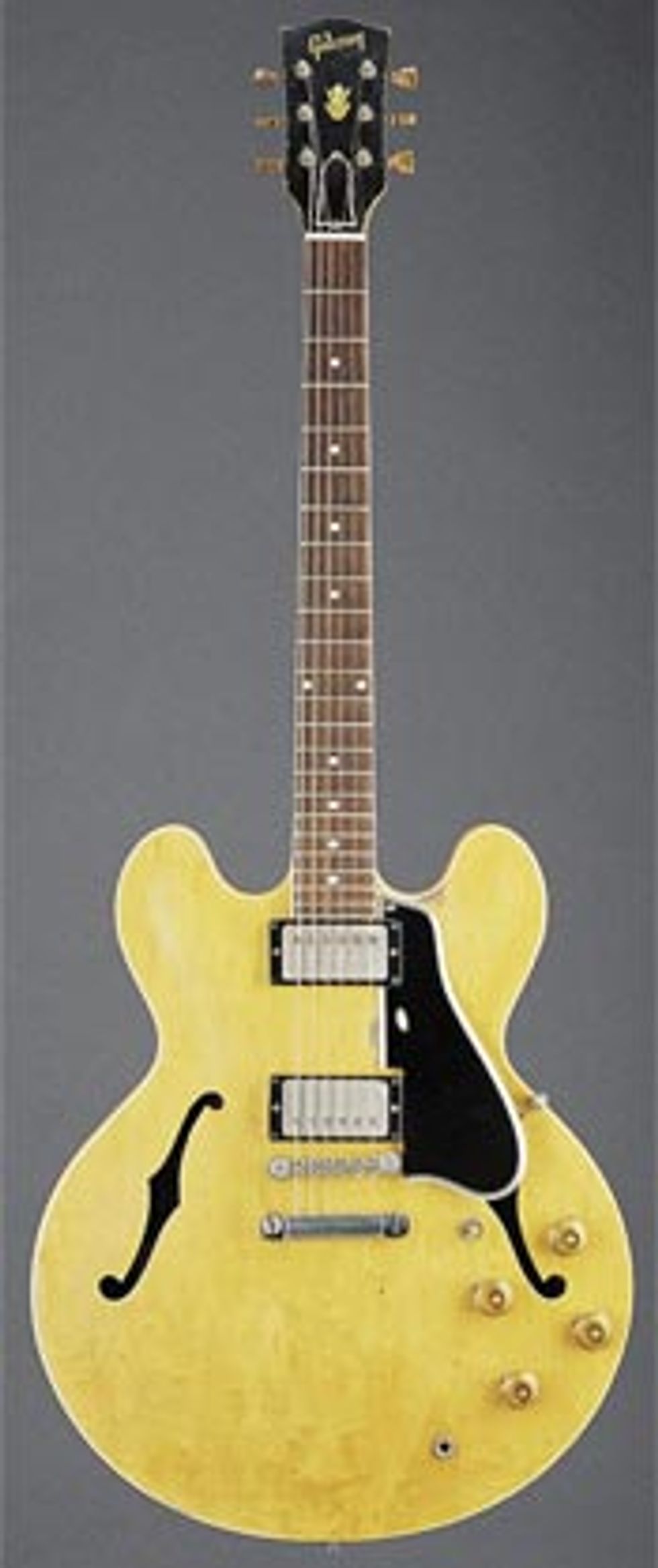 | 1959 Gibson ES-335TN “The ES-335T(D) wasn’t the first Gibson hollowbody electric guitar, but today it is certainly the most popular and most collectible. In fact, the pioneering ES-150 pre-dates the ES-335 by over 20 years! The thin body and the semi-hollow construction techniques made this guitar extremely popular. The 1959 ES- 335TN pictured here is special (and extremely collectible) for several reasons. Natural finish was only available through 1960, and pearl dot inlays through 1962. The ES-335 also utilized Gibson’s new humbucker pickups right from the beginning. A mint 1959 ES-335TN with Natural finish will easily bring $100,000 in the vintage guitar market.” –Zachary Fjestad |
| 1962 Gibson Les Paul Custom “Gibson’s Les Paul model was introduced in 1952, and quickly became their flagship guitar for solidbodies and later throughout the entire guitar line. Throughout the 1950s, Gibson introduced variations of the Les Paul including the top-of-the-line Custom that featured three pickups, full body, neck, and headstock bindings, and ornate pearl inlays. In the early 1960s, Gibson introduced a new design for the Les Paul that featured a symmetrical body with pointed “horns.” The Les Paul Custom shown here was only produced for three years, because in 1963, Les Paul was dropped from all Gibson guitars. These guitars in mint condition are valued between $25,000 and $28,000.” –Zachary Fjestad | 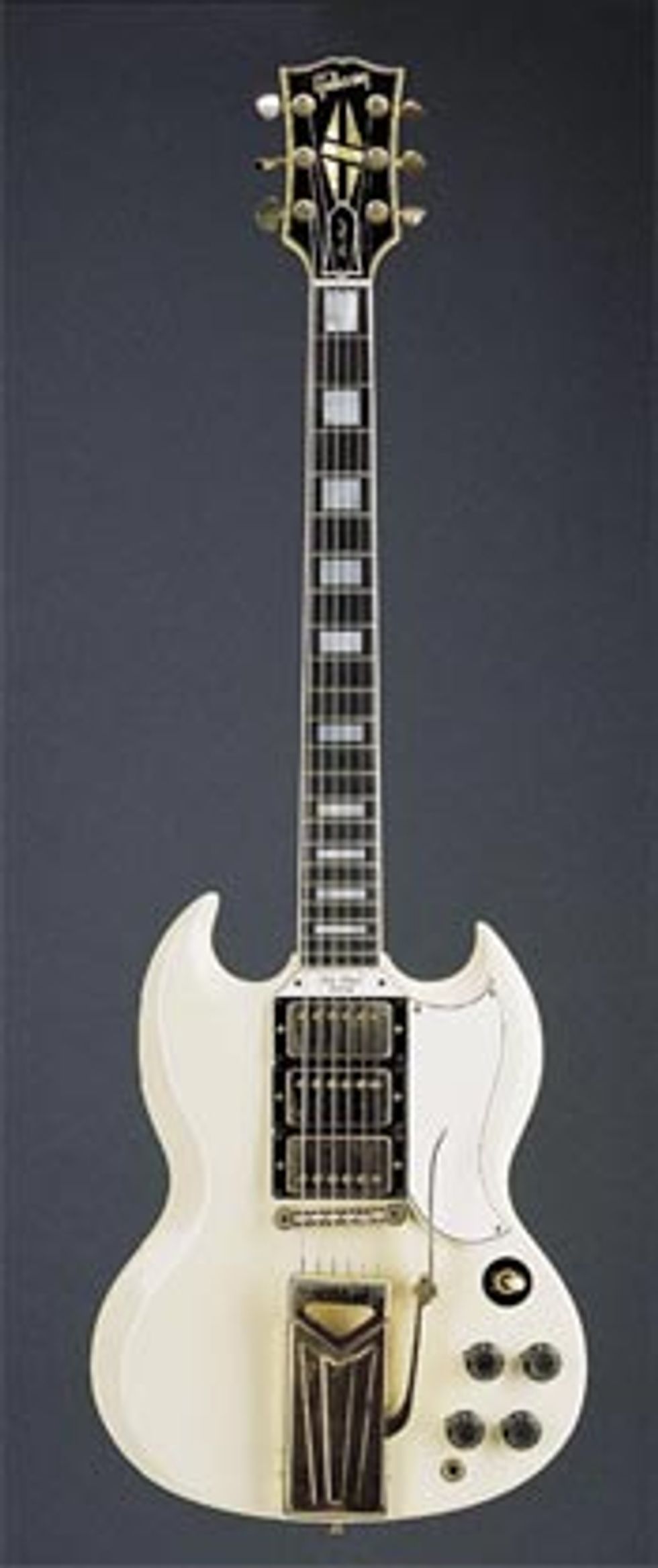 |
Finding Treasures
“In 1978, I bought a D’Angelico New Yorker for $1800 and learned about a whole new level of sound.
“The following year, I bought a Stromberg Deluxe for $800 and a Brazilian rosewood Martin D-35 for not much more.The year after that a truly spectacular Stromberg Master 400 came my way for two grand. A 1924 Lloyd Loar-signed L-5 was offered for the staggering sum of $4000 dollars and I declined. But my wife, Faye, bought it for me.
“Those prices, ludicrous by today’s standards, strained my budget. Faye, a skilled musician herself, was content to play one mandolin, but she never held me back. Quite the contrary; as guitars began soaring in value, it was my brilliant, beautiful spouse, eerily prescient, who encouraged me to trade up before all the good stuff was out of reach.
“I began buying, selling, trading, and poring over instrument lists mailed out by vintage guitar dealers— a relatively nascent profession at the time. I studied want ads and used my lunch hour at the hospital to track down interesting sounding items. Ignorance, confusion, and flat-out larceny prevailed, and most of these detective jaunts ended in futility. But once in a while I struck gold:
“A hippie living in a Hollywood crash pad sold me his ’34 Gibson L-5, housed in a battered leather case festooned with international travel stickers, because he was going to meditate full-time and no longer needed ‘help.’
“A prosperous Mexican-American businessman brought his late father’s glorious deadmint 1940 Epiphone Emperor to my private office waiting room after hours, accepted my check with tears in his eyes and told me he was happy someone would be playing it again.”
–Jonathan Kellerman
In the Zone
“Our family reveres music and musicians, and creating music together brings us closer. When we play, a kind of hypnotic calm settles over us, such that it’s useless to try and talk to us. We know that if Dad is in the zone, noodling around, you’d better wait before telling him anything of importance; he might nod and smile distantly, but he won’t hear you. The flip side being that if you need to confess something—a speeding ticket or a broken vase—that is the best time to do it.” –Jesse Kellerman (Jonathan’s son)
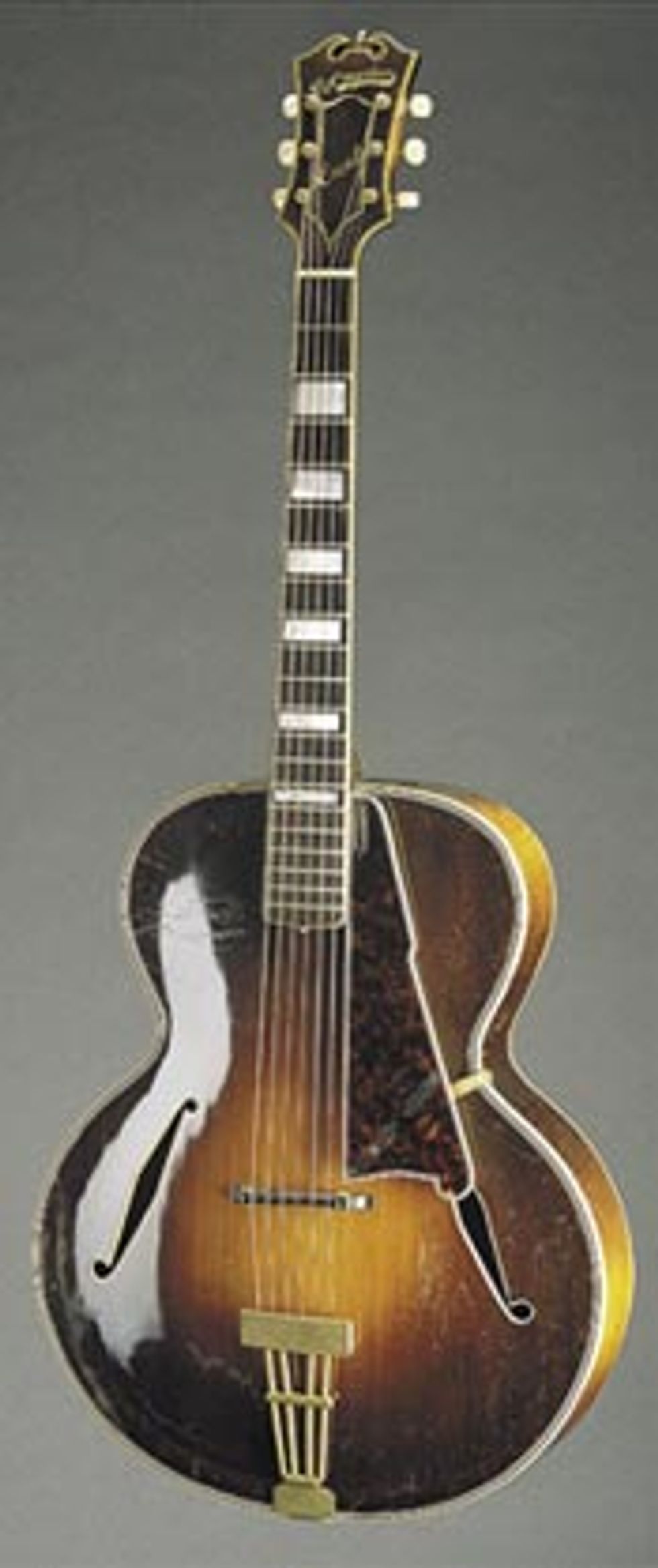 | 1934 D’Angelico Excel “The Excel model was produced between ’34 and ’64 (the year of John D’Angelico’s death), and many players and collectors consider the Excel to be one of the finest — and most collectible — jazz guitars ever made. This highly prized 1934 model (non-cutaway) was constructed at the pinnacle of the Golden Age of Jazz and the Big Band Era, and is adorned with period Art Deco appointments. Typical market prices now start in the $20,000 range.” –Jim Bastian, Vintage archtop expert and dealer |
| 1965 Fender Jazz Bass “1965 was the year the Beatles invaded Shea Stadium. More important, at least to me anyway, this was the year Fender was sold to CBS. It’s also the year of this beauty. This was an important last year of many features on the Jazz Bass. It was the last year of dot position markers, unbound original profile necks, original style tuners, and “warm” sunburst finishes. The no-logo case was being phased out and the Golden Era of Fender quite frankly was over. The ’65 Jazz Bass is one of the basses you must own in your lifetime. These basses tend to set up with low action and devastating tone. You can get tones from creamy smooth and deep bottoms to that midrange-in-yer-face attack. Just listen to any Led Zeppelin album— John Paul Jones used an early ’64 Jazz Bass. The Candy Apple Red, custom color beauty seen here is dressed down to battle regalia (less the funk filters—that’s no covers or thumb rest to the civilian crowd) and is ready to play at a moment’s notice. If you can remove your drool cup for a moment and wish to buy one, figure $12,500 to $16,000, depending upon condition.” –Kevin Borden Vintage bass enthusiast President of Good Guys Guitars | 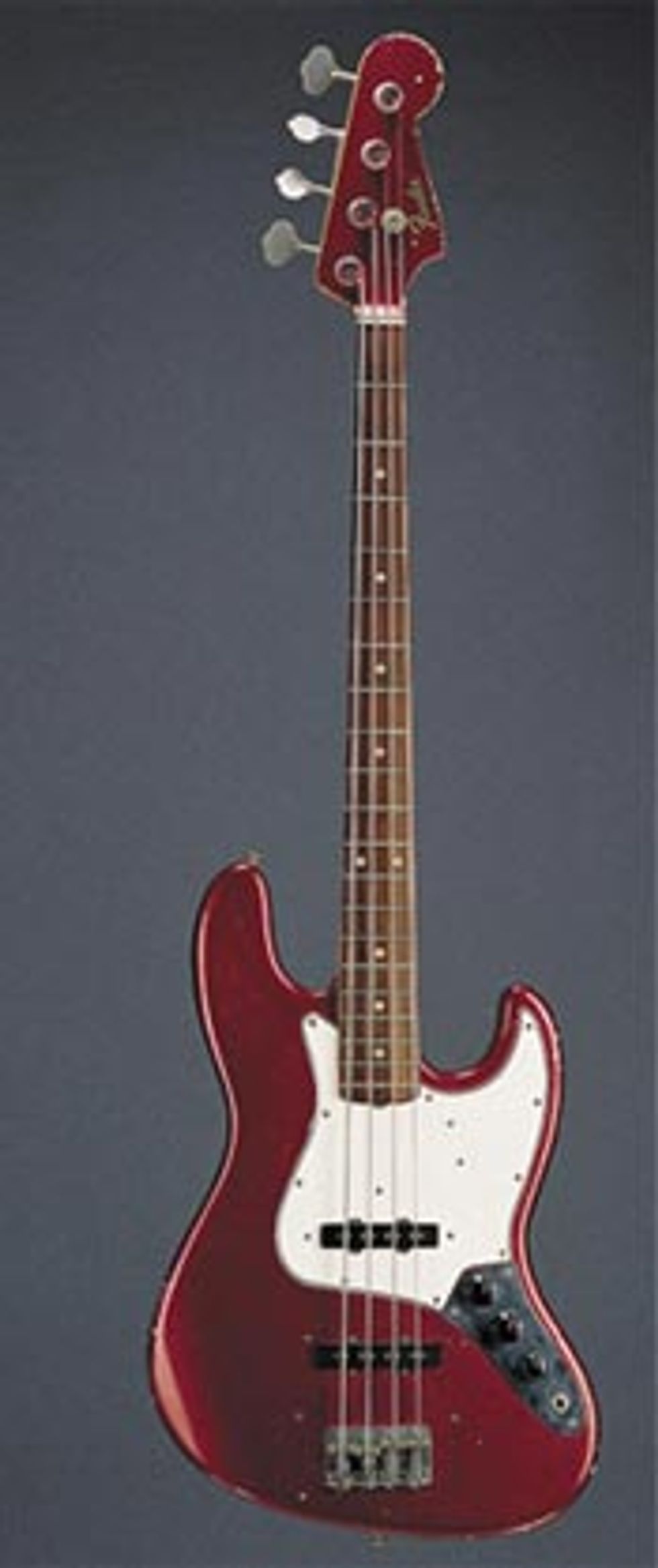 |

